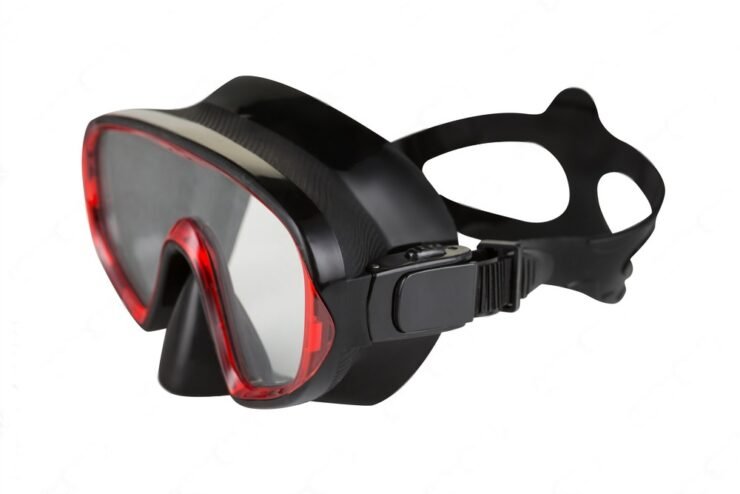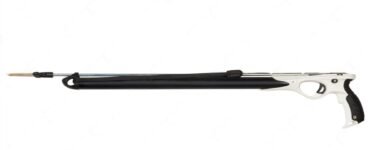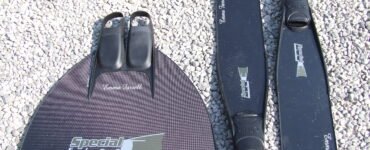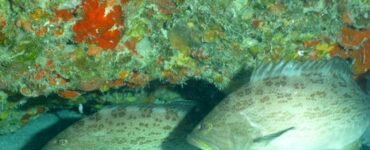Choosing the right mask is crucial for a comfortable and successful spearfishing experience. The mask not only provides you with clear vision underwater but also ensures a proper seal to prevent water from entering. There are various mask styles available each with its own advantages and considerations. In this article we will explore the pros and cons of different mask styles for spearfishing helping you make an informed decision when selecting your mask.
Low-Volume Masks
Low-volume masks are popular among spearfishermen for several reasons. They have a smaller internal volume which means they require less air to equalize and clear. Here are the pros and cons of low-volume masks:
Pros:
- Easy Equalization: With their reduced internal volume low-volume masks are easier to equalize. This is especially beneficial when diving to greater depths.
- Minimal Drag: The compact design of low-volume masks reduces drag in the water allowing for easier and more streamlined movements.
- Improved Peripheral Vision: Low-volume masks generally have a wider field of view providing better peripheral vision to spot fish and other objects underwater.
Cons:
- Limited Space for Noses: Some low-volume masks have a smaller space for the nose which can make equalizing difficult for divers with larger noses.
- Tighter Fit: Due to their design low-volume masks may have a tighter fit on the face. This can cause discomfort for some divers particularly those with wider or larger faces.
Frameless Masks
Frameless masks are popular for their minimalist design and lightweight construction. They lack a rigid frame around the lens offering a more flexible and compact mask option. Here are the pros and cons of frameless masks:
Pros:
- Compact and Lightweight: Frameless masks are typically more compact and lightweight compared to framed masks making them easy to pack and carry.
- Improved Field of View: Without the frame obstructing the peripheral vision frameless masks provide an enhanced field of view allowing for better awareness of your surroundings.
- Flexible Fit: Frameless masks often have a more flexible skirt which allows for a better seal and comfortable fit on a variety of face shapes.
Cons:
- Less Durability: The lack of a rigid frame can make frameless masks slightly less durable compared to framed masks. They may be more susceptible to damage from accidental impacts or improper storage.
- Limited Customization: Frameless masks generally have fewer customization options compared to framed masks such as interchangeable lenses or customizable strap adjustments.
Framed Masks
Framed masks are the traditional mask style with a rigid frame surrounding the lenses. They are known for their durability and sturdiness. Here are the pros and cons of framed masks:
Pros:
- Durability: Framed masks are typically more robust and durable due to the presence of a rigid frame. They can withstand rough handling and accidental impacts.
- Wide Range of Customization: Framed masks often offer various customization options including interchangeable lenses customizable straps and different frame colors.
- Ample Space for Noses: Some framed masks provide more space for the nose allowing for easier equalization for divers with larger noses.
Cons:
- Higher Internal Volume: Framed masks generally have a higher internal volume compared to low-volume masks. This can require more air to equalize and clear especially when diving deeper.
- Slightly Bulkier: The presence of a frame makes framed masks slightly bulkier and can create more drag in the water compared to low-volume or frameless masks.
Choosing the Right Mask Style
When selecting a mask style for spearfishing consider the following factors:
- Fit and Comfort: The mask should fit comfortably on your face without causing any pressure points or discomfort. Try different styles and sizes to find the one that suits your face shape and size best.
- Equalization Ease: If you frequently dive to greater depths consider a low-volume mask for easier equalization. However if equalization is not a concern or if you have a larger nose a framed mask with more nose space may be preferable.
- Field of View: Consider the field of view provided by the mask. A wider field of view can enhance your ability to spot fish and navigate underwater.
- Personal Preference: Ultimately choose a mask style that aligns with your personal preferences and requirements. Consider factors such as weight portability customization options and durability.
Conclusion
The choice of mask style can significantly impact your spearfishing experience. Low-volume masks offer easier equalization and reduced drag but may have a tighter fit. Frameless masks are compact and lightweight providing improved peripheral vision while framed masks offer durability and customization options at the expense of a higher internal volume. Consider your comfort equalization needs field of view and personal preferences when selecting the right mask style for your spearfishing adventures. Remember to try on different masks and choose one that fits well seals effectively and enhances your underwater vision for a successful and enjoyable spearfishing trip.
FAQs
1. Can I use a regular snorkeling mask for spearfishing?
Yes a regular snorkeling mask can be used for spearfishing. However consider the specific needs of spearfishing such as equalization ease and peripheral vision when choosing a mask. Dedicated spearfishing masks often offer features tailored to the activity.
2. Can I wear contact lenses with a spearfishing mask?
Yes you can wear contact lenses with a spearfishing mask. Ensure that the mask provides a proper seal and does not cause discomfort or dislodge the lenses during dives.
3. Are mirrored lenses beneficial for spearfishing?
Mirrored lenses can be beneficial for spearfishing as they reduce glare and provide better visibility in bright conditions. However their effectiveness may vary depending on the specific diving environment and lighting conditions.
4. How often should I replace my spearfishing mask?
It is recommended to replace your spearfishing mask every 1 to 3 years depending on its condition and usage. Inspect the mask regularly for signs of wear cracks or degraded skirt material and replace it if necessary.
5. Can I use anti-fog products on my spearfishing mask?
Yes anti-fog products can be used on spearfishing masks to prevent fogging. Follow the manufacturer’s instructions and ensure the product is compatible with the mask material.

Explore the mesmerizing world of spearfishing on our blog! Discover tips, techniques, and breathtaking underwater stories from passionate spearfishers. Dive in for an ocean of adventure.







